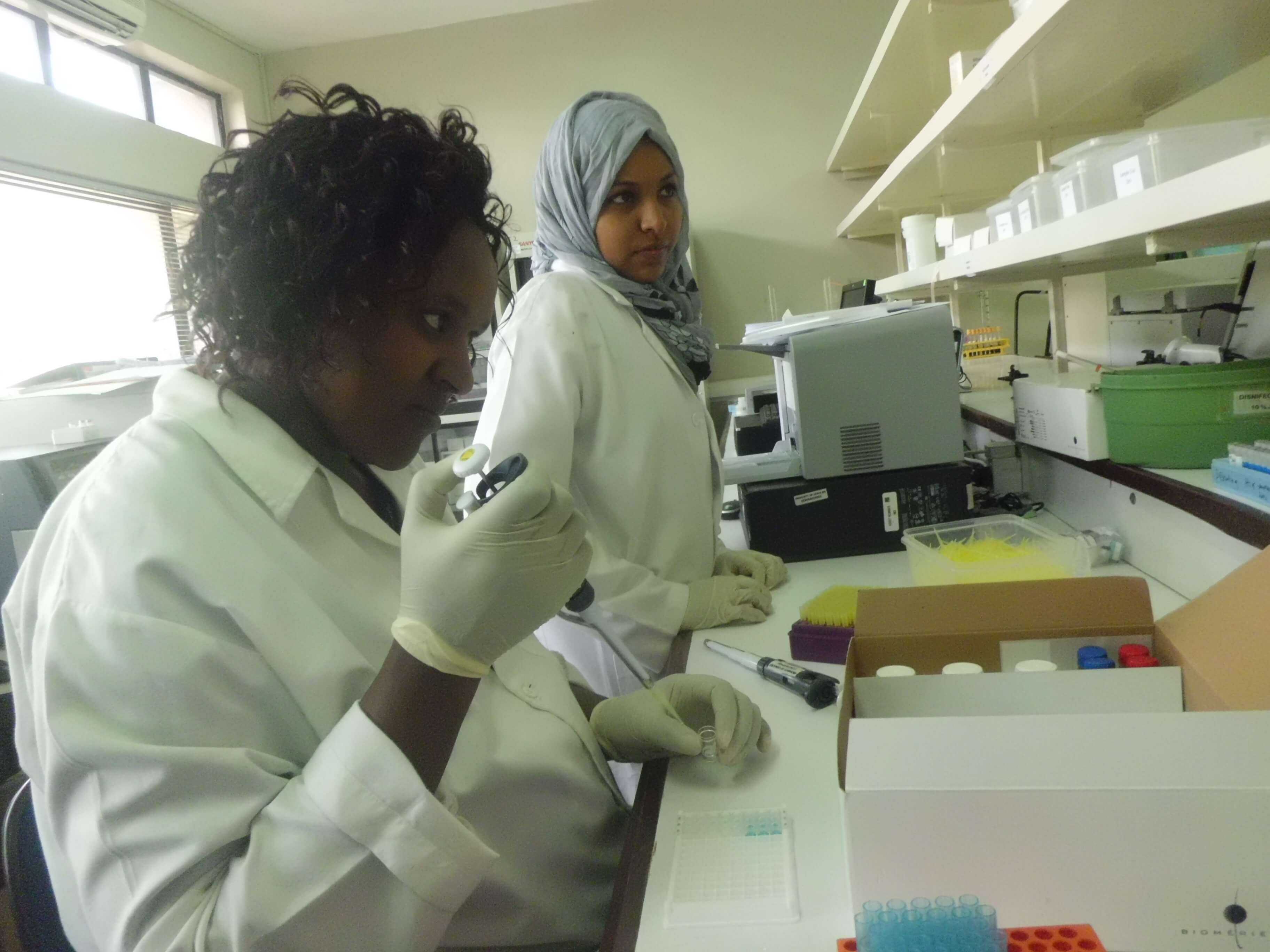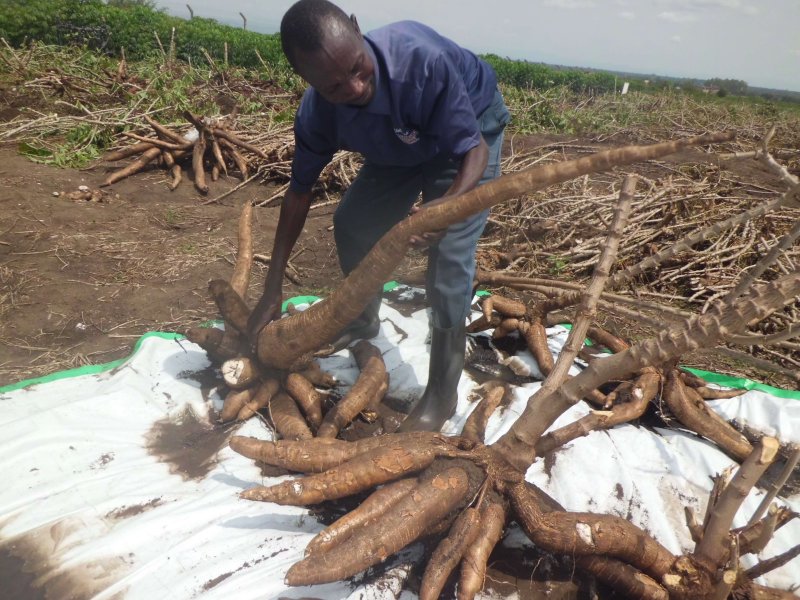Among the attendees are students and recent graduates with degrees biotechnology. Among those is Jonan Twinamatsiko, who stops to discuss the idea of using genetic engineering in Uganda.
He explains that, despite what the average person might think, modern biotechnology has applications far beyond the realm of agriculture. The same technology can be used for human health and for the environment. Too many people in this region have come to associate the words “genetic engineering” with tainted, or even poisonous, foods.
“I remember during my first year, lecturers introduced the topic of GMO’s as part of the course unit. I became curious and asked my lecturer Dr Arthur Tugume all sorts of questions. I did not like the topic and I wanted to change the course. But when the teaching about molecular biology and how to select genes from a given biological species was introduced, I developed interest in the course,” Twinamatsiko said.
After attending a number of educational meetings where scientists present papers on genetic engineering, he has come to appreciate the science and its potential.
“I was particularly impressed when we were taught that insulin a drug used by patients suffering from diabetes. I liked it because genetic engineering is used to save lives in the health sector,” he said.
Twinamatsiko has urged his fellow university students to stand up for the technology and ignore those who oppose it and was among those who pushed other students at Makerere University to participate in the recently concluded “March for Science”. The team raised the voice of the youth to Uganda’s legislators, demanding that they embrace science, technology and innovations for the growth of the county’s economy.
History of application of modern biotechnology in Uganda
Modern biotechnology’s introduction to Uganda came in 1993, according to Dr. Yonna Baguma, deputy general director in charge of research coordination at the National Agricultural Research Organisation (Naro). That’s when, according a paper Baguma, the animal science department Makerere University proposed testing a transgenic growth hormone for increased milk production in Ugandan cattle.
This was at the time that the US and the European Union were engaged in debate over trade on GMO’s. Later EU suspended the sale of the hormone, prompting Uganda’s scientists to halt the research.

Two years later, a proposal was made to conduct phase 1 clinical trial of HIV vaccine referred to as ALVAC vCP 205. It was the first preventative HIV-1 vaccine study in Uganda, which led to the formulation of national biosafety guidelines and consequent establishment of the National Biosafety Committee.
In 2008, the government passed a national biotechnology and biosafety policy for Uganda.
To date, laboratory-based investigations of genes conferring resistance to pathogens, drought and other stresses, along with field trials of transgenic crops continue in the nation. Other works include ongoing research on animal vaccines and improved diagnostic tools for respiratory cattle diseases, such as East Coast Fever and Foot and Mouth Disease.
In the health sector, molecular markers are being used to study characterization of drug resistance to anti-malarial, anti-tuberculosis and antiretroviral drugs for HIV/AIDS.
In the field of environment, genetic markers are being developed to characterize various species of wildlife including elephants, hippopotamuses, buffalos and wild pigs. Among those efforts is a project by a team of scientists from Makerere University’s College of Natural Sciences. The group, led by Professor Charles Masembe, is studying the transmission of African Swine Fever in pigs and with hopes of coming up with vaccines to eradicate it.
Scientific view on genetic engineering in agriculture, health and environment
The use of modern biotechnology in Uganda, however, has deeper roots, suggests Dr. Stephen Buah, who leads research into vitamin A fortified bananas at the National Research Laboratories. He explains that the breakthrough that laid the groundwork for modern biotechnology came when the structure of DNA was discovered in the early 1950s. Mankind has been using it in a rudimentary form since ancient brewers began using yeast cultures to make beer, wine, bread, yogurt and antibiotics.
In Uganda scientists are using artificial media to grow products such as banana plantlets multiplied using tissue culture. And in medical and health care applications, more than 250 biotech healthcare products, 400 biotech drugs are under clinical trial in Uganda. They include tests for HIV, cancer and malaria which are safer and more accurate.
Worldwide, treatments also are being developed for diseases such as diabetes, stroke, anemia, growth deficiency, rheumatoid arthritis, hemophilia, leukemia and various cancers. Key examples include a hepatitis B vaccine developed in 1986; Erythropointin developed in 1988 for treating anemia; interleukin-2 developed in 1989 for treating cancer in the kidney; and Gardasil developed by Australian scientists in 2006 for immunization against cervical cancer.
In Uganda, scientists at Makerere University and the Walter Reed Project are working on a malaria vaccine, RTS, S/AS01, which has been approved by the World Health Organization for pilot testing. Work also is underway on a promising HIV vaccine.
Ebola and Marburg vaccine tests have been ongoing. And the results published last year by Dr. Hannah Kibuuka, director of MUWRP, suggest the vaccine is safe, while inducing antigens with immune responses.
In environmental science many people believe we are in the midst of a crisis. The air, soil and water bodies are getting contaminated as a result of our activities. Non-renewable resources are being depleted. And we are producing massive amounts of non-biodegradable waste. One of the solutions here could be the use of genetically modified microorganisms that break down industrial waste.
But always, it seems that use of biotechnology in the agricultural sector is what draws the most attention – in part, because it is controversial.
Dr. Buah sees the technology as a way to improve farmers’ ability to grow crops, by producing seeds with traits that offer protection against drought, pests and disease.
As of 2009, he said, the number of food insecure people globally was estimated at about 1 billion. So, we need to do more to improve crop yields by introducing genes that confer resistance to insects, tolerance to herbicides and resistance to environmental stresses, he said.
Lominda Afedraru is a freelance science journalist in Uganda who specializes in agriculture, health, environment, climate change and marine science. Follow her on the Daily Monitor website www.monitor.co.ug, Facebook or Twitter @lominda25.































